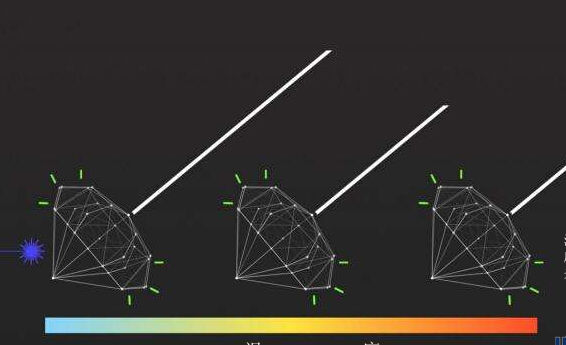
This multi-functional micro diamond probe can be used to measure the thermal fluctuation of materials in order to better understand the thermoelectric effect and friction phenomenon, etc.
Recently, Applied Physics published research showing scientists has developed a tiny diamond probe, which can transmit the temperature information exactly like the optical transmission. And the working temperature can be from 150 to 850 Kelvin degrees that is equivalent to the range of variation from the cryogenic temperature to the aluminum melting point.
This diamond probe can be used to measure the thermal fluctuation of materials in order to better understand the thermoelectric effect and friction phenomenon, etc. Owing to good biological compatibility of diamond, the probe also can be used in biological system. In addition, it can also replace the ordinary industrial sensors, monitoring the status of the extreme environment and change, such as internal engine, combustion chamber and high pressure system, etc.
At the heart of the diamond probe there is a kind of shining diamond defect called Ni base S3 defect center, which is formed by a nitrogen atom, a space, a nickel atoms, another space and straight chain structure of another nitrogen atom. And these are embedded within the crystal structure of diamond.

"This structure seems to be complex, but actually it is a kind of common defects of diamond, especially synthetic diamond. Nickel is commonly used for synthesis of precursor", Gilles Ledoux, the French CNRS research center researcher explains.
It is found in the study that the defect center could shine like other diamond defects when using laser pulses to activate the stimulus, and the light-emitting time is increased with the temperature decreasing.
What really can make the defect center suitable for the temperature probe is its electronic structure; There are two excited state of energy level in the electronic structure in the defect center, the two energy have much difference between them in terms of level lifetime. The difference of one thousand times shows that the luminescence is very sensitive to the temperature changes.
Researchers put it on the silicon wafer and in the cryostat, keeping the temperature at 77 Kelvin to 873 Kelvin and the experimental result can be accurate to 1 ℃.
Estelle Homeyer of Institute says: the sensitivity of this diamond probe is high, and its response speed of temperature is also fast; The temperature range is from 150 Kelvin to 850 Kelvin; It also has good spatial resolution and wide range of uses;. The limitation is only that the size of diamond grain. So these high performance and characteristics make it superior than the average luminance temperature sensor.
The biggest advantage of this new type of diamond temperature probe is that it can detect the heat change quickly, and measure the thermal properties of different materials in microscale and nanoscale precision.